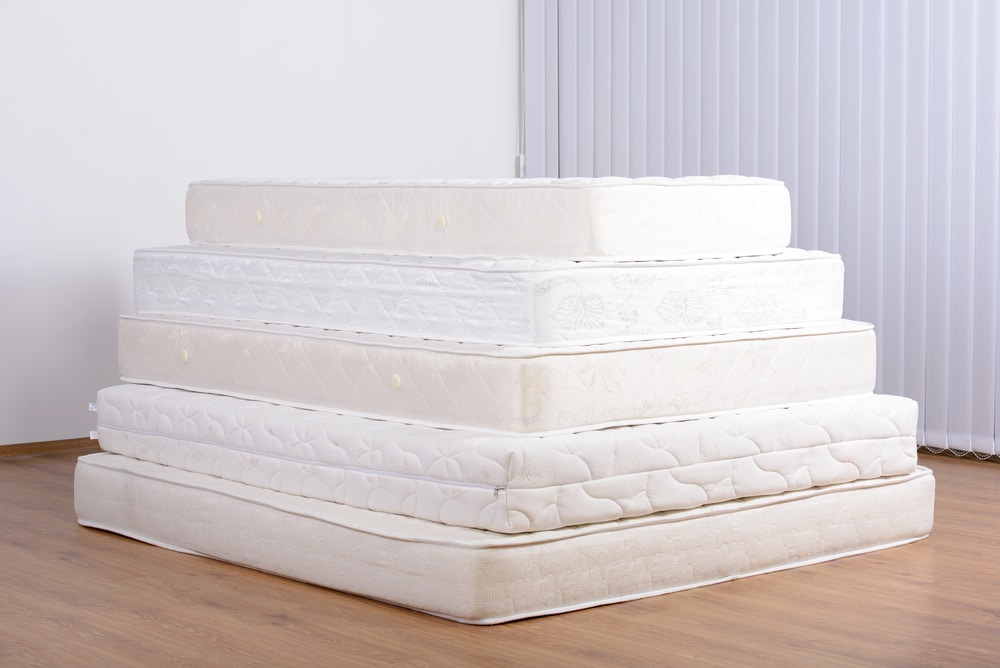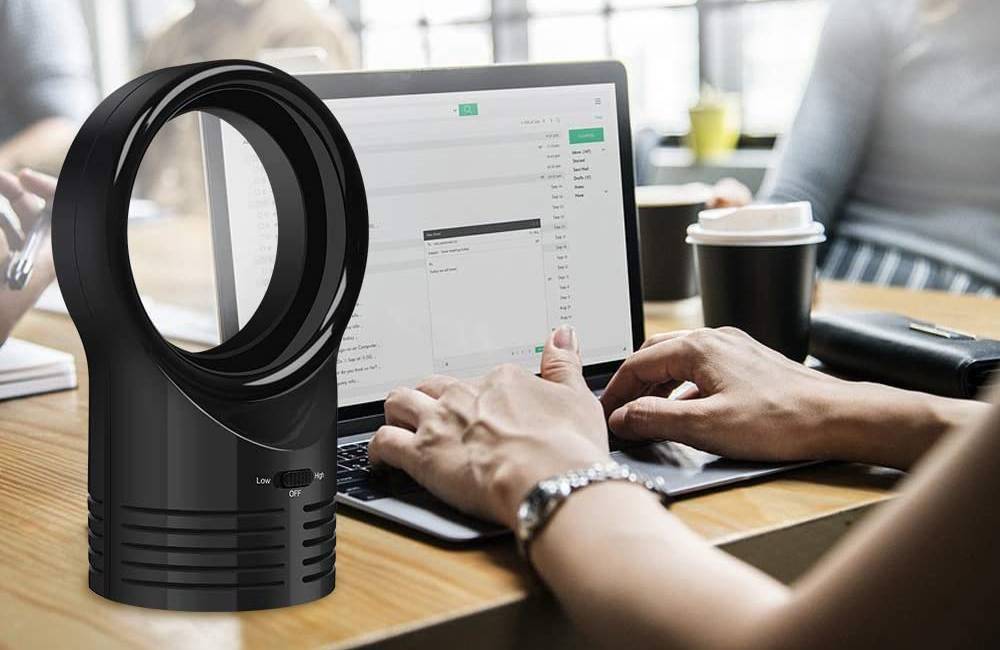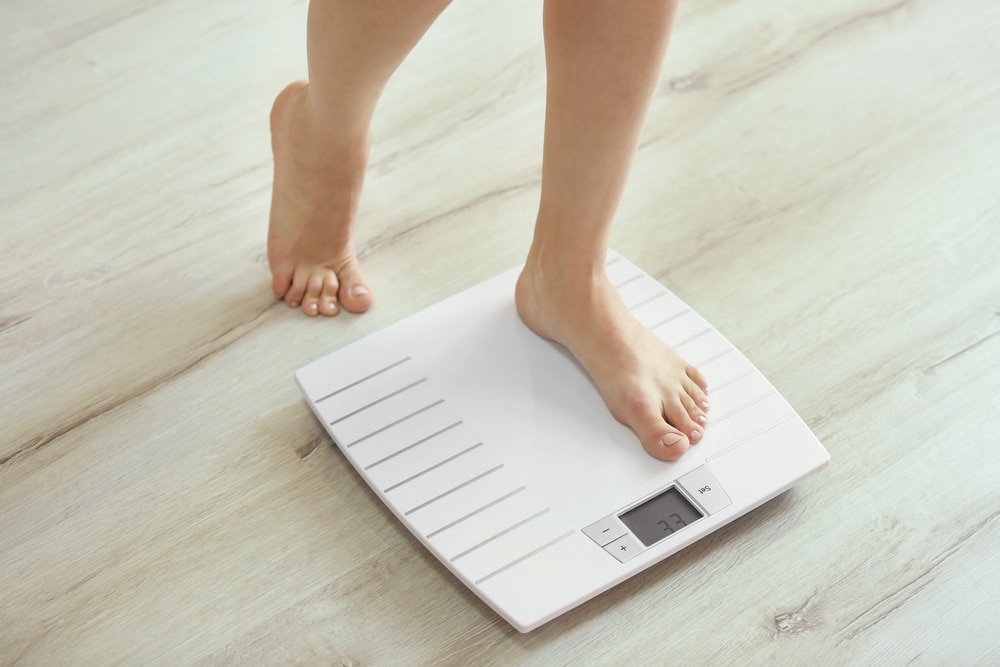Last Updated on
With all of the quality mattress types available on the market today, choosing a mattress can often be unnecessarily confusing. This could make it not only difficult to choose the perfect type of mattress for you and your specific sleep preferences but could also make it hard to make any decision at all, particularly if you are shopping for a new mattress online with a bed in a box retailer.
What are the different types of mattresses? This article answers that. It explores their traits, benefits, and disadvantages to help you maximise your comfort level and wake up free from aches and back pain every morning.
Different Types of Mattresses Explained
Let’s examine the various mattress materials available to you. Furthermore, pay attention to the variations in mattresses so you can choose the one that will give you the most comfort each night.
Open Coil Mattress
Open coil mattresses, also referred to as innerspring mattresses, consist of one continuous wire shaped into a layer of open coils.
Features
An open coil mattress can be soft, medium, or firm, depending on the type of springs inside. The gauge of the springs inside denotes the firmness level. A lower number equals a thicker wire resulting in a firmer feel.
An open coil mattress is typically best for back and stomach sleepers, but some side sleepers can also find comfort. However, they are more likely to compress your shoulder while you sleep, resulting in soreness or pain in the morning.
This type of traditional innerspring mattress is typically the most inexpensive when compared to other types of mattresses. They provide sleepers with a bouncy feeling bed and are highly breathable, thanks to the open design of the springs. They are also lightweight making them easy to move without help from a friend or family member.
Disadvantages
Of course, traditional open-spring mattresses do have their drawbacks. Thanks to the single spring design inside, they have a significant amount of motion transfer. They also cause a roll-together sensation if more than one person sleeps on the mattress at a time. This makes them less than ideal for anyone who sleeps with a partner.
Additionally, they are not as durable as other types of mattresses. They will start sagging after about three years, and the springs could start to squeak over time. Lastly, due to their inexpensive nature, you may be able to feel the springs through the mattress top.
Pocket Sprung Mattress
A pocket sprung, or pocket spring mattress, is another, more advanced type of innerspring mattress.
Features
Instead of having one connected layer of springs, each spring works independently of one another. A pocket of the fabric also covers to isolate each spring further and helps them respond accurately to pressure on the bed’s surface.
Pocket spring mattresses contain a support system made out of coils or springs, and just like an open coil bed, the gauge of the springs determines the firmness of the bed overall. This makes pocket spring mattresses comfortable and supportive in any sleeping position. Typically, a pocket spring mattress can last anywhere from 3 to 15 years.
The pocketed design of the springs offers advanced motion isolation, good pressure relief and targeted support. For the most part, they have good edge support as well. Another benefit of the springs is that they enable minimal heat retention and a breathable design.
Disadvantages
Compared to foam mattresses, coil mattresses do not contour your shape or provide you with a hug sensation. Some innerspring mattresses with pocketed coils are also quite heavy.
Memory Foam Mattress
Memory foam or viscoelastic foam mattresses have rapidly become one of the most popular mattress types available.
Features
Memory foam mattresses are hypoallergenic and durable and provide superior relief for pressure points and support in any sleeping position. One of the most noticeable traits of a memory foam mattress is its ability to conform to the shape of your body.
They also significantly reduce motion transfer, making them a great option for couples. Memory foam mattresses can also conveniently be compressed for easy shipping and delivery purposes.
Memory foam was invented by NASA and was initially used as seat cushioning to help absorb shock and pressure upon reentry into the Earth’s atmosphere. Since its inception, it has become widely used in a variety of products, like mattresses. In its wake, other proprietary foams are also common for use in mattresses.
Almost all memory foam mattresses can be used with adjustable bases, which are good for sleep apnea, snoring, chronic pain, and acid reflux. They typically can last a person anywhere from 5 to 10 years. However, many are one-sided, so you can expect them to wear out faster than a mattress you can flip.
Disadvantages
One major complaint about memory foam mattresses is that they tend to retain heat while you sleep. Of course, many newer mattresses include employing methods to help prevent overheating, such as gel, copper, or charcoal infused into the material.
Memory foam mattresses are not known for their edge support either, but some mattresses remedy this with reinforcement around the edges. Lastly, some foam mattresses arrive with an unpleasant odour referred to as off-gassing, but the smell should dissipate within a day or two.
Hybrid Foam Mattress
Hybrid mattresses bring you the best traits of foam and innerspring mattresses in one bed.
Features
Hybrid mattresses contain a layer of pocket spring coils topped with a layer of foam for enhanced contour and comfort. The combination of springs and coils makes them a great option for side sleepers, back sleepers, and stomach sleepers alike. Hence, it is no surprise that they are rapidly becoming one of the most popular mattress types chosen by couples and people who sleep in multiple positions throughout the night.
They are similar to memory foam mattresses but tend to be more responsive, breathable, and have better edge support. In addition, hybrid mattresses are durable and last between 8 and 10 years, even though they are almost exclusively one-sided by design.
Disadvantages
Keep in mind that hybrid beds also have the potential for an initial off-gassing period, and depending on the bed, you may not completely absorb and dissipate motion if you sleep with a restless sleeper or a pet.
Pillow Top Mattress
Another type of mattress that prioritises comfort is the pillow top mattress. Pillow top mattresses were very common before foam beds became available, but today, you can find a pillow top on either spring or foam mattresses.
Features
In general, a pillow top consists of an additional layer of padding that is several inches thick on top of a normal mattress. As the name suggests, the padding has a pillow-like feel which allows you to sink into the bed.
Aside from coming built into a mattress, you can also purchase separate pillow top pads to go on top of your existing mattress to increase softness, comfort and create more of a plush feel overall. Pillow top beds are good for side sleepers and people with aches and pains, or anyone who need elevated pressure relief.
A pocketed or open spring pillow top mattress should last you anywhere from 3 to 5 years. With a foam pillow top mattress, you can expect about 5 to 8 years of use.
Disadvantages
These beds have become less popular over time because they tend to sink and sag easily, particularly in the middle, making them less ideal for couples. The uneven wear can also interfere with support and the bed’s ability to promote proper spinal alignment. In addition, due to the design style, you can’t flip this type of mattress. This hindrance adds to the uneven wear overall.
Latex Mattress
Latex mattresses are similar to other foam beds but possess a springier, more responsive feel for a different kind of comfort.
Features
Latex mattresses provide sleepers with firm support that is good for heavier individuals and couples and can accommodate sleeping in any position. They can be made with synthetic materials, but the best kind of latex mattresses are made from Talalay natural rubber foam. Latex mattresses are hypoallergenic and anti-microbial, which can benefit people with allergies.
More synthetic latex foams will retain more heat than natural materials, but overall they do a better job than memory foam, keeping you cool while you sleep. Latex material also absorbs motion very well and has strong edge support.
Latex beds are great for all sleep positions thanks to their responsive and contouring nature. They also excel with pressure relief making them an excellent choice for sports injuries or residual aches and pains. Many people find their latex bed can last for as long as 10 to 25 years if they rotate regularly.
Disadvantages
Latex mattresses are more expensive than other foam or spring beds, but they also have extended durability. Aside from the upfront cost, the only other drawback to latex beds is they are heavy, which makes them harder to manoeuvre.
Air Bed
An air mattress is what it sounds like, a bed filled with air.
Features

Many air beds have a flocked top to help keep your bedding in place and a nonslip base. Some air beds come with an internal pump built into the design, and others require an additional external pump to inflate and deflate. They are typically waterproof, and the best air beds are constructed with internal chambers and added support beams to help minimise and isolate motion transference. However, even with the addition of internal support beams and chambers, you should still expect a significant amount of motion transfer.
Disadvantages
While technology has advanced quite a bit over the last couple of decades, for the most part, it is not recommended for anyone to sleep on an air mattress every night or for an extended period. This is because they often struggle to provide the right amount of support and often cause improper spinal alignment while you sleep. However, air beds are a great option for camping or house guests.
Water Bed
Water beds are not nearly as common as they once were, but they can still be found, and the newer models have significantly upgraded features that can be quite beneficial for some sleepers.
Features
In general, water beds are thought to be most comfortable for back sleepers and stomach sleepers due to the firm tension and support. One of the best traits associated with water mattresses is their ability to be set to a specific temperature. Hot sleepers can drop the temperature to maintain a cooler sleeping surface, and cold sleepers can elevate the temperature, similar to a heating blanket.
The two main types of water beds are waveless and free flow. A waveless water bed has internal chambers that prevent the water from sloshing around inside the bed when you move. Free-flow water beds have one or two large internal chambers and do not prevent the water from circulating inside.
Disadvantages
With a free-flow model, you can expect a significant amount of motion transfer. As far as cons are concerned, water beds also run the risk of a puncture, may be tricky to fill, are extremely heavy when filled, and require the use of power to maintain the proper internal water temperature. For many people, these drawbacks are enough to make them choose a different type of mattress, but for those who love them, there is nothing better.
Find the Right Mattress for You
What are the different types of mattresses? In this article, we have discussed just that. Now you know about the range of materials used in top mattresses. You also have a better understanding of what each type of bed is.
Ask yourself about the type of bed you think would be best for your sleep preferences and sleeping position. For example, do you think you would benefit from the contour and pressure relief provided by a foam bed? The bounciness of a spring bed? The durability of a latex mattress? Or do you want to combine the benefits and opt for a hybrid mattress? Either way, you should have all of the information needed to make the best decision for you.
What have you decided? Let us know what in the comments below!
Emily is a woman of many talents. She has a B.A. in English and enjoys writing. Emily loves accessorising her home with quality products that not only serve a purpose but also enhance the overall convenience and tranquillity of her living space; there’s nothing like coming home to your own personal sanctuary after a long day! She loves anything that can make life easier or more comfortable—from dishware to furniture to lighting fixtures.



